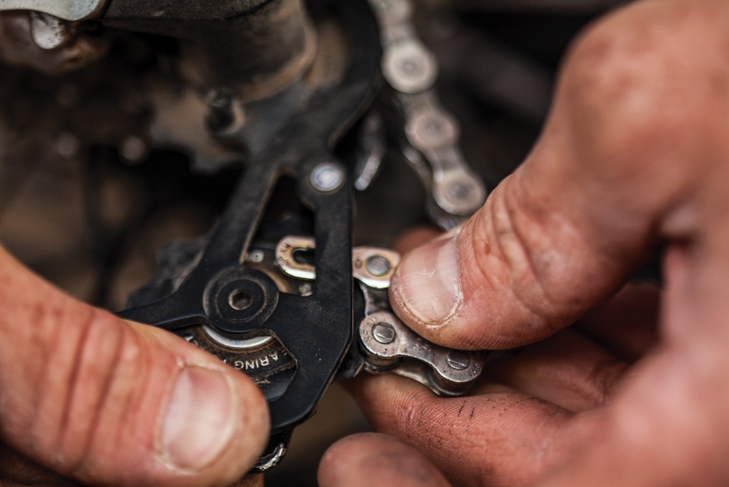
As a mountain biker, you’re bound to have your sanity questioned by outsiders. As someone interested in the sport, you may be hesitating to take your first ride. Silence the worriers with these injury prevention tips.
Whether you live for the hills, hit terrain parks, or prefer gentler slopes, mountain biking injuries are pretty common. Many mountain bikers will deal with at least one injury during a mountain biking (MB) season. Surprisingly, speed and unpredictable terrain are not the only things to blame. But with a bit of awareness, you can minimize your risk of injury and enjoy this exhilarating sport to the max.
Traumatic injuries
The most common traumatic injuries sustained while MB don’t require hospital care. They include cuts, scrapes, and bruises. Contact with the ground, nearby vegetation, gears, or chains are common causes of this type of injury. Upper and lower limb sprains and strains are also typical.
More serious, yet occurring less often, are fractures of the collarbone, shoulder, elbow, ribs, wrist, and fingers. Falls are the main cause, especially ones that involve being thrown over the handlebars. The impact from breaking a fall can also result in a separation of the acromio-clavicular joint (where the collarbone meets the shoulder) and/or a shoulder dislocation. Lower limb fractures are less typical. The ankle is the most common site, with potential causes involving the foot slipping off the pedal or a hard fall to the side.
Spinal and head injuries
Falls occasionally contribute to spinal injury, as well as brain injury, including concussions. Young riders from 14 to 19 years old have been reported to suffer more brain injuries, attributed to poorer compliance with helmet wear.
Overuse injuries
Mountain bikers are also exposed to excessive repetitive loads placed on their bodies over time. Tendonitis, the irritation of a tendon connecting a muscle to a bone, can manifest at the Achilles, hamstrings, and knees. The iliotibial band at the outside of the knee can undergo repetitive friction, resulting in pain and swelling. The neck, lower back, wrist, and hand are also prone to pain, and occasionally numbness and tingling, from overuse.
Bike-fitting tips
A poorly fitted bike contributes to traumatic and overuse injuries.
Choosing your frame size
The correct frame size should result in
- a slight bend at your elbows
- a comfortable reach to the handlebars
Setting your saddle height
- Place the crank arms in a straight up-and-down position.
- Aim for a 25- to 30-degree knee bend at the bottom of a pedal stroke.
- Place your saddle in a level position initially, then adjust as you determine your riding style and preferred terrain.
Setting your fore and aft position
- Place the crank arms in a horizontal position.
- The kneecap of your front leg should be centred over the pedal axle.
Be prepared to tweak your setup to determine what feels best for your body.
Bike maintenance
The safety of your ride depends on a well-maintained bike. Make time to understand how your bike works so you can keep it in good working order all season. Get into a habit of checking your bike before each ride and during rides. Monitor your tire pressure and tread, inspect your brakes regularly, and fix problems as they come up. Specialists at mountain biking stores can help with bike fitting, as well as ongoing maintenance.
After the acute stage
Often with an acute injury there’s a period of immobilization, such as when you have a cast or a moon boot in place. Following this period, visit a physiotherapist to get your strength, range of motion, and function back to normal and for expert guidance on a successful return to riding.
Treatment for overuse injury
An overuse injury may involve several contributing factors, making it difficult to decipher the cause on your own. Find a physiotherapist with experience treating mountain bikers for a comprehensive assessment and a focused plan to get you back to the trails. If applicable, physiotherapy should involve a home exercise program to address any strength or flexibility deficits that are playing a role in your injury.
Don’t rely on beginner’s luck
Inadequate skill, poor decision making, and loss of control can all contribute to MB injuries. Minimize your risk by enrolling in an instructional course with a certified instructor. Learn how to ride safely, pick trails suited to your level, progress appropriately, and fall properly to maximize your safety.
Ride smart
Riding outside your capabilities leads to poor tactics and endangers you as well as other riders. Know your limits both physically and technically. Master freeride trails before heading out on technical runs.
Understand the why of protective gear
| Protective equipment | Best option |
| helmet | downhill: full-face helmet to protect against head and facial injuries other MB: a helmet long at the back and sides |
| goggles | wraparound for protection against debris without compromising field of view |
| mouthguard | best options are custom-made by dentists for optimal fit |
| gloves | full-fingered coverage to protect against abrasions and lacerations during falls |
| body armour | padded shoulder, chest, and back armour to soften falls and protect from sharp objects |
| elbow and knee pads | hard-shell to minimize impact of a fall |
| shin and ankle guards | hard-shell to decrease risk of abrasions |
Too much, too soon?
Errors in training are a factor in injury development in any sport. Regardless of your MB experience, build up your riding tolerance gradually. It’s tempting to take advantage of every fine-weather weekend, but keep in mind that fatigue is a well-known contributor to injury. Increase the duration and intensity of your rides separately and ensure that sufficient rest is part of your game plan.
Off-the-bike fitness
Build the fitness necessary for safer riding with off-the-bike training.
- Incorporate upper and lower body eccentric and isometric strengthening, and establish cohesiveness in your core muscles (abdomen, back, and glutes).
- Focus on movements rather than exercises, such as choosing squats over knee extensions.
- Enhance your riding endurance by challenging your aerobic and anaerobic capacity with interval training.
